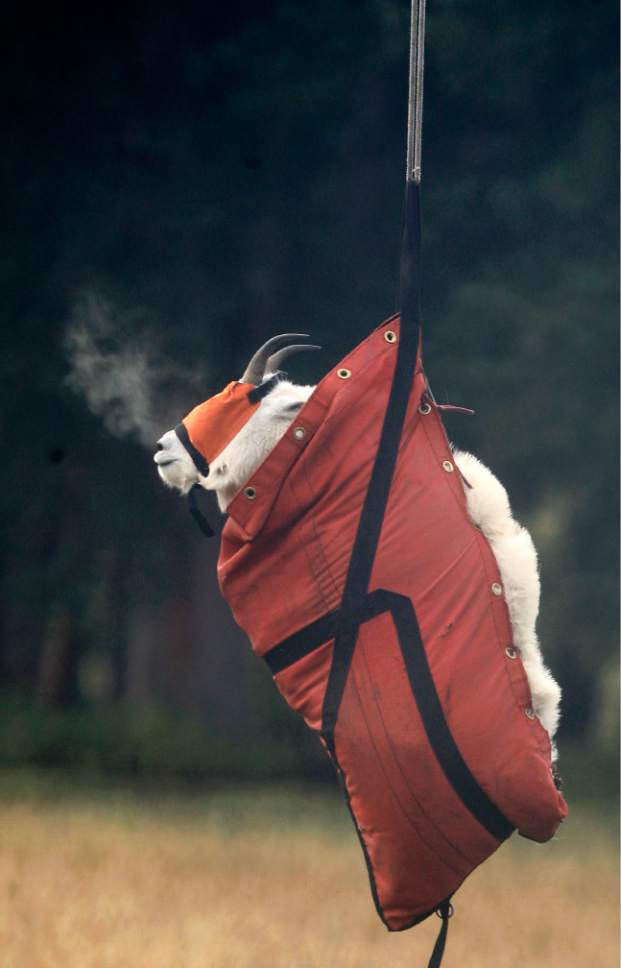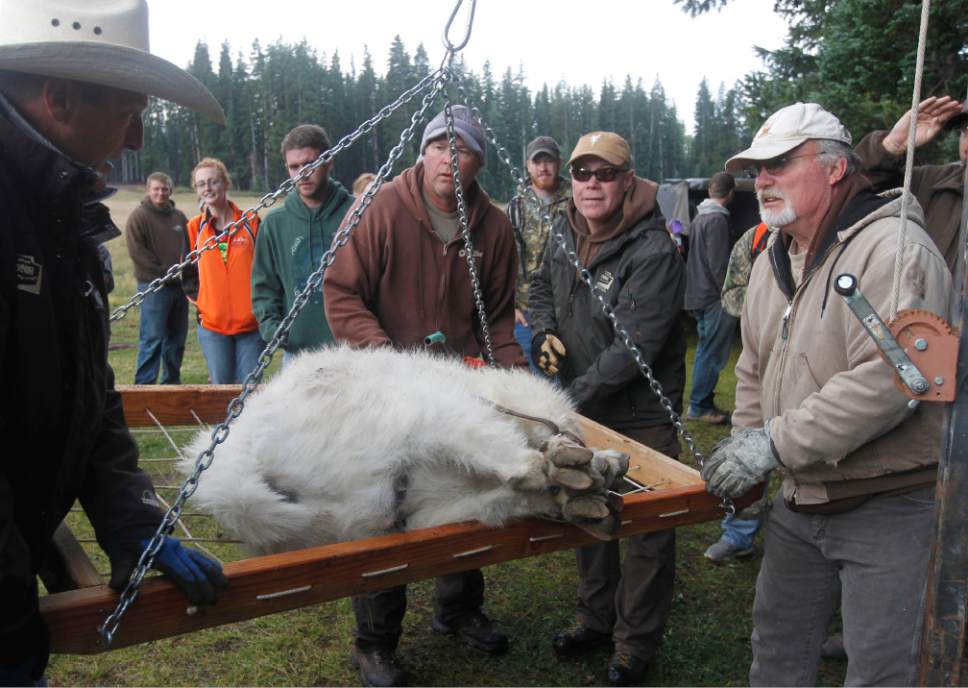This is an archived article that was published on sltrib.com in 2017, and information in the article may be outdated. It is provided only for personal research purposes and may not be reprinted.
A federal judge refused to order the removal of mountain goats in Utah's La Sal Mountains on Thursday, saying it is too early for the courts to interfere. The U.S. Forest Service is still formulating a decision in response to Utah's effort to establish non-native big game in alpine terrain, though the agency voiced concerns about the impact the animals could have on delicate and rare plant communities.
The decision dismisses a lawsuit brought by the Grand Canyon Trust and Utah Native Plant Society that alleged the Forest Service is failing its duty to manage habitat in deference to the state's traditional role of overseeing wildlife. The dispute arose after the Utah Wildlife Board's decision to release goats onto state-owned land that have since established a herd in the Manti-La Sal National Forest.
Federal scientists had concluded the goats would subvert the purpose of the 2,380-acre Mount Peale Research Natural Area, but the state went ahead and transplanted 20 goats from the Tushars to the La Sals in September 2013.
U.S. Magistrate Judge Paul Warner's decision will hardly put the controversy to rest since it does not affirm the goat introduction, but merely concludes the Forest Service has yet to make a decision that can be challenged in court.
"The unique intersection between federal land management and state wildlife management requires the Forest Service to work cooperatively with the states," Warner wrote. "The Forest Service did not authorize the state to release mountain goats near the Manti-La Sal National Forest. To the contrary, the Forest Service objected on numerous occasions and asked the state to delay introducing the mountain goats until more research could be conducted."
Utah was "exercising its inherent authority to regulate wildlife" when it rejected the federal request and released goats on state land.
"Now that the animals have migrated to some degree onto federal land, the Forest Service is tasked with determining whether the goats' presence violates federal law and the existing forest plan. To achieve this task, the Forest Service has decided that it needs to gather more information," the judge wrote.
But Mary O'Brien, a botanist with the Grand Canyon Trust, said officials have all the information they need to justify ridding the La Sals of goats. Resource Natural Areas, or RNAs, are set aside as reference areas that are to be left undisturbed for scientific and educational study.
"The Forest Service has committed to removing exotic species from RNAs and at the forest level the Manti-La Sal has committed to removing exotics from Mount Peale. There is nothing clearer than that. Exotic species are to be removed," O'Brien said. "In this case [mountain goats] are highly and inevitably destructive. They are trampling, they are wallowing and it can't help up but damage the fragile and scattered alpine plants."
The deliberate introduction of a non-native animal, especially one that weighs about 175 pounds and has a habit of rolling around on soft ground, would affect the mosses, lichens and plants on 12,721-foot Mount Peale, especially in spring when soils are saturated with snowmelt, according to internal Forest Service documents entered into the court case. The goat introduction should have undergone an environmental review and been the subject of a special-use permit and the Utah Division of Wildlife Resources (DWR) should have gathered baseline vegetation data before putting goats on the ground, the groups argued.
Tony Frates of the Utah Native Plant Society saw a silver lining in the legal outcome.
"The extent of the monitoring actions that are now in place would not have occurred without the strong intervention and concern by a number of different organizations and private citizens," he wrote in an email. "The problem is that no monitoring or other work was being done prior to the release. The 'bad guy' in this story is the Utah DWR and it is true that the Forest Service was then placed into a very awkward position."
DWR officials could not be reached Thursday, but they have previously said a great deal of planning and study went into the goat project, developed in response to the public's desire to see big game, and the Forest Service waited until the last minute to lodge its objections.
"We have a close working relationship with the Forest Service and we would both like to see that remain intact. We were trying to address all these concerns for quite a long time," DWR Director Greg Sheehan told the Wildlife Board three years ago when it authorized the La Sal goat plan.
There were no mountain goats in Utah when the state turned six loose on Lone Peak in 1967. Today there are herds established around the Wastach, Uinta and Tushar mountains and Mount Dutton. In 2014, DWR released another 15 goats into the La Sals and today that herd numbers between 60 and 65 with a goal of reaching 200.
Twitter: @brianmaffly





